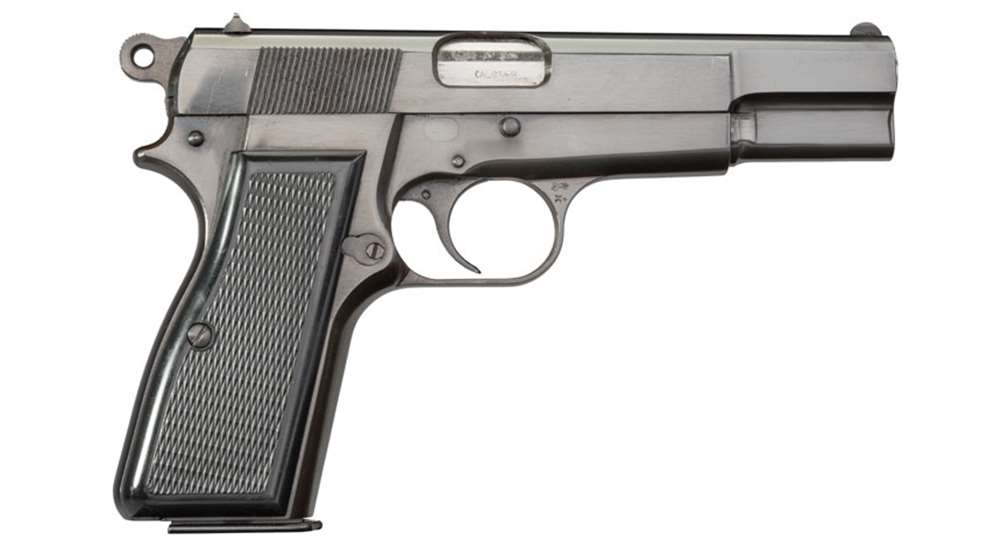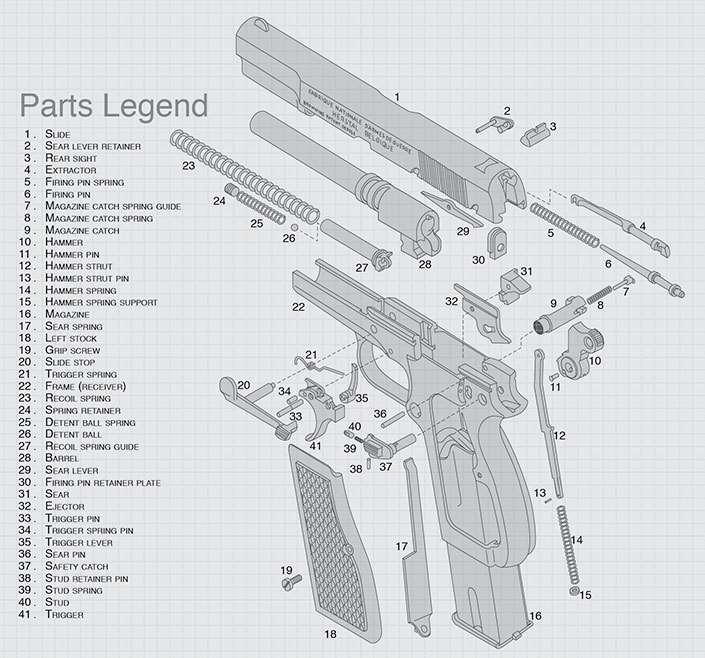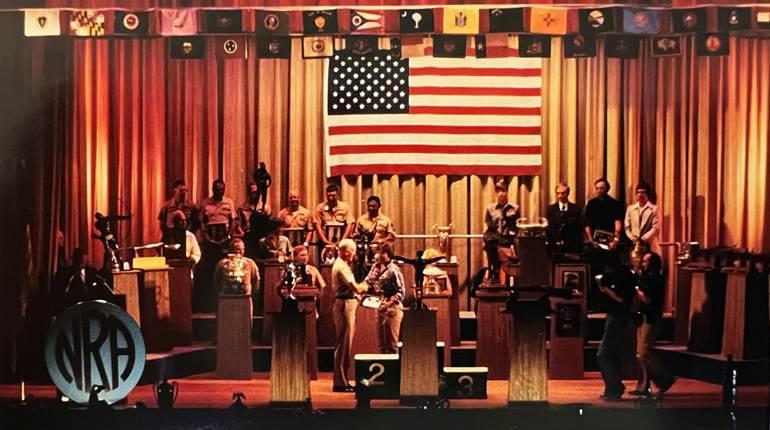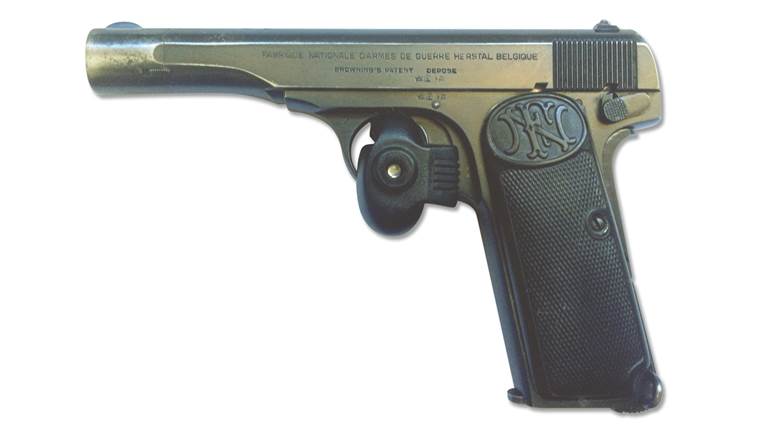
In 1922, when the French put out the call for a new military pistol chambered in 9 mm Luger, Belgium’s Fabrique Nationale (FN) answered with firearm legend John Moses Browning and a lesser-known Belgian designer named Dieudionné Saive. The American-born Browning had a long working relationship with FN, and his firearm designs were already the stuff of legend.
Browning started by creating a staggered double-column magazine that held 16 rounds, unheard of for a flush-fitting unit. As development progressed, Browning conceived of the basic shape of the pistol and its breech-locking system in which the rear of the barrel cammed down to disengage dorsal lugs from recesses in the slide.
Working with an FN design team that included Saive, Browning ultimately produced a pistol called the Model 1927 Grande Rendement. However, Browning passed away in 1926—at FN in Herstal—still awaiting the pistol’s patent, which was not issued until the next year.
Despite Browning’s and FN’s efforts, the Grande Rendement was found wanting; it was considered to be too large and heavy for its intended purpose. It fell to Saive to re-work the design and produce a gun that satisfied the desires of the military.
Saive made numerous crucial changes to the pistol, dispensing with its complicated contours, removable plate-mounted lockwork, interrupted screw breechbolt and internal striker. He also reduced the dimensions of the gun and the capacity of the magazine.
The new magazine held a still considerable, for then, 13 rounds. Dubbed the M35 or Grand Puissance (High Power), the final version of the pistol was not finished until 1935, but it was a design so sound that it has remained virtually unchanged to this day—and has been widely copied.
The French—the original catalysts for the High Power’s creation—chose not to buy the gun, adopting a lesser-chambered pistol of French design. Other nations, however, recognized the numerous benefits of the High Power, and a great many adopted it as their standard-issue service pistol. These benefits include reliability, generous magazine capacity, excellent ergonomics and the fact that it is chambered for the ubiquitous 9 mm Luger cartridge.
The FN plant was seized by the Germans during World War II, and the Nazis had High Powers produced for their own troops. Meanwhile, Saive, who had fled Belgium, eventually settled in Toronto, Canada, and helped the John Inglis Co. produce High Powers there for Nationalist Chinese, British and Canadian forces. Thus, both sides made use of the P35 pistol during the war.
Note the name “Hi Power” (as opposed to High Power) is reserved for the commercial guns sold by Browning in North America. A well-known variation of the gun was the Capitan model that incorporated tangent sights graduated to 500 meters and a detachable wooden combination holster/shoulder stock.
The High Power has been used by military forces, police agencies and citizenry around the world, but, due to high cost and limited demand, it was dropped from the Browning line in 2017. While many may contend that this venerable single-action gun has been equaled, few will say that it has ever been surpassed.
Instructions
Safety glasses should be worn when performing the assembly/disassembly procedure. Be sure the pistol is unloaded before beginning. Remove the magazine (16) from the magazine well. Pull back the slide (1) and push the safety catch (37) into the second notch. Then push out the slide stop (20) from right to left, as shown (Fig. 1). Now release the safety catch and permit the slide to go forward and off the receiver (22).
Push the safety catch down to the “fire” position, then push the sear pin (36) out from right to left. Allow the ejector (32) to pivot down until it stops. With the ejector in this position, the safety catch can now be pushed out (Fig. 2).
Hold the gun in your left hand and push in the magazine catch (9) until it is flush with the frame. Using a 1/8"-wide screwdriver, turn the magazine catch spring guide (7) 1/4 of a turn (Fig. 3). This will lock the spring guide to the magazine catch. Then lift out the unit.

Push the trigger pin (33) out from right to left. Hold the gun with the right side up. With your right hand, pull the trigger (41) forward and upward; this will allow the removal of it and related parts (21), (34) and (35) as a unit (Fig. 4). They must be replaced as a unit when reassembling the gun.
To remove the firing pin (6) and spring (5), hold the slide so that the rear is facing you. With a 1/8" punch, push in the end of the firing pin; at the same time, push down on the firing pin retainer plate (30) (Fig. 5). After the firing pin and spring have been removed, pry out the extractor (4).

To remove the sear lever (29), hold the slide upside down in the right hand. Pry up the end of the sear lever retainer (be sure the extractor has been removed before doing this) (Fig. 6). When the head of the retainer is clear of the slide, pry it the rest of the way from the outside of the slide. Reassembly is in the reverse order.






































